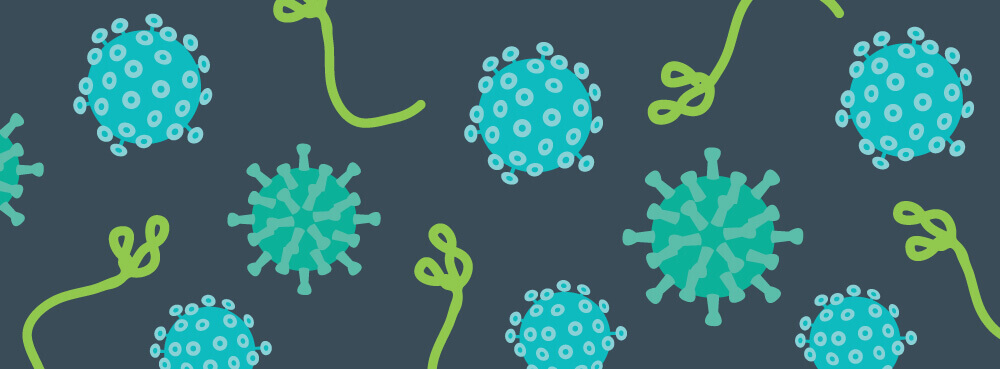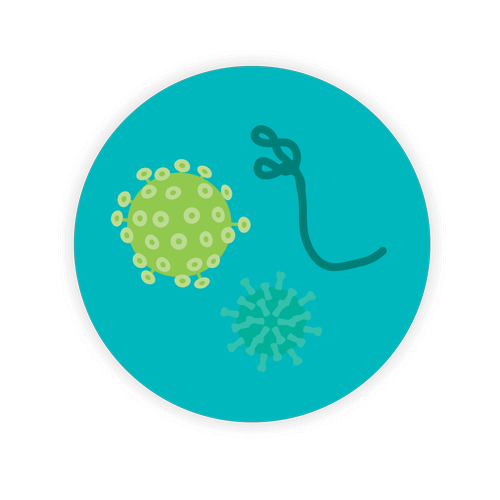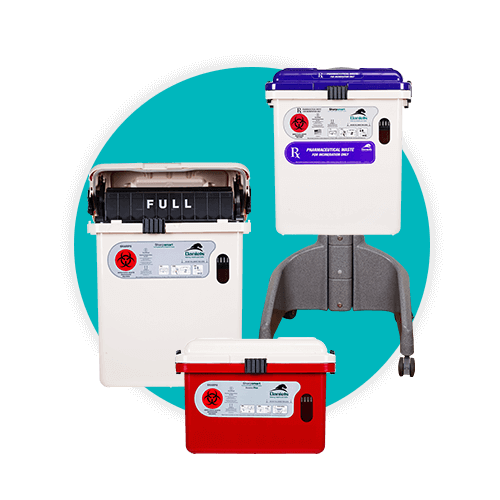Diseases Caused by Improper Healthcare Waste Disposal

While most medical waste is deemed non-hazardous, up to 25% of discarded medical waste is hazardous and can cause injury, illness, or diseases in humans or animals along with other dangers to the environment.
The risk of contamination or exposure to any number of diseases caused by improper healthcare waste management and faulty hazardous waste disposal methods should put every healthcare waste generator on notice.
You may think if only 25% of discarded medical waste is hazardous, we don’t have much to worry about. After all, that means 75% or more of medical waste is non-hazardous. But there’s a problem with that. In many scenarios, hazardous waste is mixed in with non-hazardous waste due to improper waste segregation.
In most instances, such mistakes are not done purposely but due to lack of proper education and training not only for healthcare workers, but ancillary staff in any medical facility including EVS, laundry departments, and maintenance workers.
TOPICS WE WILL COVER:
1 / Improper Management of Sharps Leads to...
4 / Benefits of Proper Waste Management
Improper Management of Sharps Waste Leading cause of Increased Risk of Disease
When sharps are not properly disposed of, public health and wellness is at risk. A number of sharps or other sharp wastes transported to landfills contain spores of tetanus or other blood-borne pathogens that include but are not limited to:
- HIV/AIDS
-
Hepatitis – Hepatitis B is transmitted in the same way as the AIDS virus. Risks of exposure increase from needlestick injury scenarios. Hepatitis B can lead to both acute and chronic hepatitis, cirrhosis of the liver, and even liver cancer.
Healthcare workers, from point of origin to the employees of a waste management facility or landfill are often exposed to needlestick injury scenarios that are contaminated with infected blood, or waste stained with infected blood or body fluids. Improperly disposed of sharps and needles may also introduce pathogens through a cut or a stick that instigates bacteremia, quickly spreading through the bloodstream and causing inflammation and infecting organs.
Every year, according to the CDC, roughly 500,000 people in the United States are infected by blood-borne pathogens found in medical waste, most commonly through accidental, infected or compromised needlestick injury situations. The bulk of these injuries occur due to improper disposal of needles and syringes.
Exposure to hepatitis and HIV are not the only blood-borne pathogens found in medical waste. The CDC has identified more than 20 blood-borne pathogens that can be spread through accidental sharps injuries.
If solid waste gathered at a healthcare waste facility is not segregated or disposed of properly, insects, flies, rodents, and small animals can spread diseases like rabies and yes, the plague. May seem a bit dramatic but if history has taught us anything, it's that hygiene and waste management are essential to health.
Parasitic infections caused by improperly disposed of laboratory medical waste is also a risk to hospital workers and the public. Parasites thrive in waste and can be easily communicable to humans through skin contact and respiration. Lung infections such as tuberculosis, pneumonia, and influenza are caused by pathogens released into the air by medical waste.
Meningitis is another risk of transmission via bodily fluids, containing pathogens that trigger inflammation of membranes surrounding the brain and spinal cord.

Proper Waste Segregation Reduces Risk of Contamination
Daniels Health has decades of experience providing safe, cost-effective, and efficient solutions for medical waste generators of any size. Prevention is the key to reducing the risk of disease caused by improperly disposed of healthcare waste.
In the United States alone, it is estimated that over 380,000 needlestick injury exposures occur on a yearly basis. The CDC provides information that can help reduce needlestick and sharps injuries, as well as the implementation of sharps injury prevention programs. Sharps injuries are not limited to needles, but also include razor blades, scalpels, metal wire, scissors, or other sharp objects that may pierce the skin. Prevention of needlestick injury is also preventable – and applicable - to body piercing and tattooing establishments.
The Needlestick Safety and Prevention Act of 2000 made positive strides in reducing needlestick injuries within healthcare professions and has potentially reduced costs of treating such injuries by approximately $415 million since its implementation.
Resources to Improve Waste Segregation that you can Access right now:

Benefits of Proper Healthcare Waste Management
The benefits associated with proper, approved, and compliant healthcare waste management is not to be understated. In addition to improving safety for employees and ancillary staff, proper healthcare waste segregation and management saves facilities money in medical waste disposal and transportation costs. Benefits also include reduced risk of penalties and fines for noncompliance.
Compliance for proper healthcare waste segregation and medical waste management is overseeing by numerous federal and state agencies including EPA, the CDC, and OSHA. Penalties for noncompliance are staggering and can amount up to $70,000 per day, per incident until it is rectified.
Improper hospital waste management leads to increased risk of exposures to needlesticks and infectious materials. Proper waste segregation at the hospital level reduces the risk of nosocomial or hospital-acquired infections, and risk of injury to employees.
Proper healthcare waste segregation, waste stream identification, and management reduces the risk of hepatitis or HIV transmission, sepsis, and long-term health effects of exposure to toxins, bacteria, and pathogens past through the air and reduces transmission through insects, rodents, and infected animal waste.
Daniels Health is dedicated to providing the tools, equipment, and latest in technologies to improve healthcare worker safety, including needlestick prevention, reduced volume of medical waste heading to landfills, and maintaining compliance to federal and state guidelines. For more information on how Daniels Health can help, call us today.
